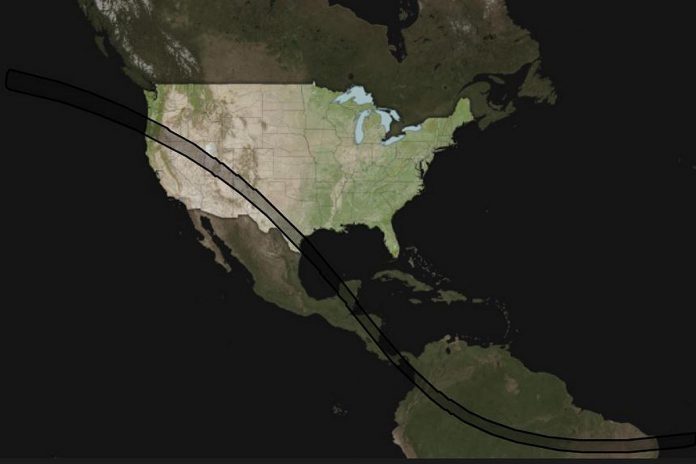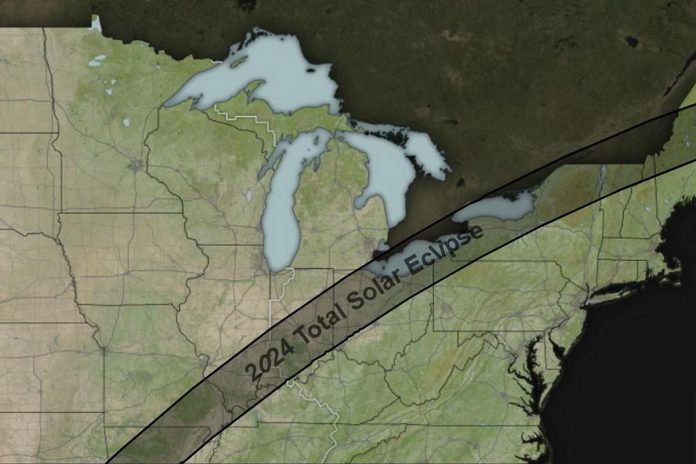
A partial solar annular eclipse was visible across Canada, including in the Kawarthas region, on Saturday (October 14) — a teaser for next spring’s total solar eclipse that will be fully visible over parts of southeastern and southwestern Ontario.
In the Kawarthas, around 20 per cent of the sun was obscured by the moon during Saturday’s annular eclipse, an event that happens every one or two years when the sun and moon are exactly in line with the Earth.
During an annular eclipse, the distances between the Earth, moon, and sun mean the moon’s disk appears to be slightly smaller than the disk of the sun. Unlike a total solar eclipse where the moon’s disk completely covers that of the sun, an annual eclipse results in a “ring of fire” surrounding the dark disk of the moon. Annular comes from the mathematics term annulus, which is the region between two concentric circles.

In the western hemisphere, this “ring of fire” was only visible in regions in the west and southwest of the U.S., as well as some regions in Central America and the northern regions of South America.
Because only a small portion of the sun was obscured by the moon in the Kawarthas, you wouldn’t have noticed the eclipse unless you were looking at the sun using eclipse glasses or — as in the case of Peterborough resident Sean Bruce — recording it on video.
In fact, it takes a total solar eclipse to result in visible darkening, and that only happens if you are in the path of “totality” when the moon completely obscures the sun.
VIDEO: October 14, 2023 partial solar annular eclipse by Sean Bruce
During the last total solar eclipse on August 21, 2017, which was the first visible in North America in decades, almost 70 per cent of the sun was obscured by the moon in the Kawarthas. Other than making the sun look like a crescent moon, there was no visual evidence the eclipse was happening.
However, that won’t be the case during the next total solar eclipse in North America, which will happen next spring on Monday, April 8th.
The path of totality for that eclipse will pass right over the parts of southeastern Ontario — including Kingston, Belleville, and Cobourg — as well as over Lake Ontario, the Niagara region, and parts of southwestern Ontario.



























